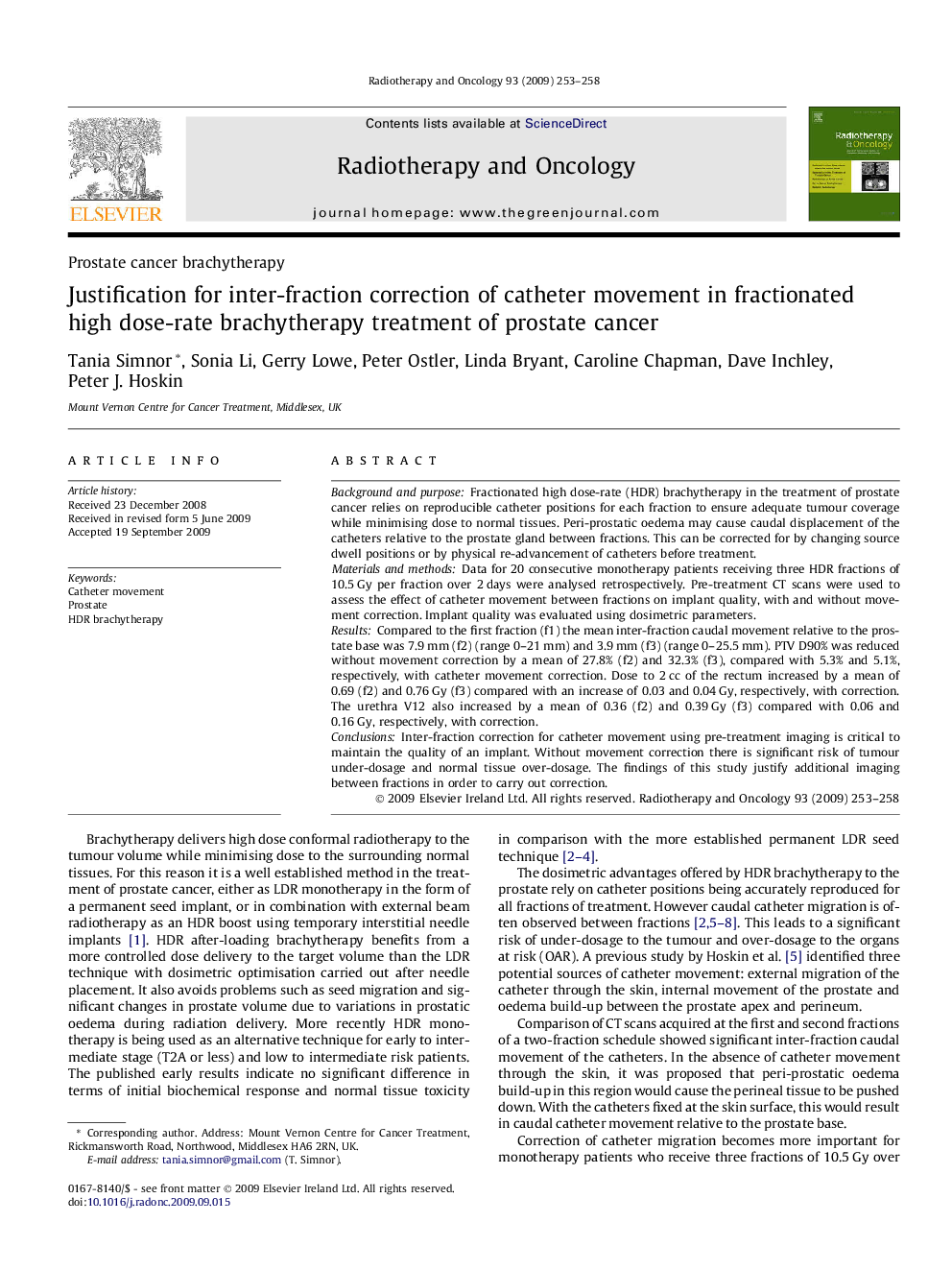| کد مقاله | کد نشریه | سال انتشار | مقاله انگلیسی | نسخه تمام متن |
|---|---|---|---|---|
| 2159790 | 1090866 | 2009 | 6 صفحه PDF | دانلود رایگان |

Background and purposeFractionated high dose-rate (HDR) brachytherapy in the treatment of prostate cancer relies on reproducible catheter positions for each fraction to ensure adequate tumour coverage while minimising dose to normal tissues. Peri-prostatic oedema may cause caudal displacement of the catheters relative to the prostate gland between fractions. This can be corrected for by changing source dwell positions or by physical re-advancement of catheters before treatment.Materials and methodsData for 20 consecutive monotherapy patients receiving three HDR fractions of 10.5 Gy per fraction over 2 days were analysed retrospectively. Pre-treatment CT scans were used to assess the effect of catheter movement between fractions on implant quality, with and without movement correction. Implant quality was evaluated using dosimetric parameters.ResultsCompared to the first fraction (f1) the mean inter-fraction caudal movement relative to the prostate base was 7.9 mm (f2) (range 0–21 mm) and 3.9 mm (f3) (range 0–25.5 mm). PTV D90% was reduced without movement correction by a mean of 27.8% (f2) and 32.3% (f3), compared with 5.3% and 5.1%, respectively, with catheter movement correction. Dose to 2 cc of the rectum increased by a mean of 0.69 (f2) and 0.76 Gy (f3) compared with an increase of 0.03 and 0.04 Gy, respectively, with correction. The urethra V12 also increased by a mean of 0.36 (f2) and 0.39 Gy (f3) compared with 0.06 and 0.16 Gy, respectively, with correction.ConclusionsInter-fraction correction for catheter movement using pre-treatment imaging is critical to maintain the quality of an implant. Without movement correction there is significant risk of tumour under-dosage and normal tissue over-dosage. The findings of this study justify additional imaging between fractions in order to carry out correction.
Journal: Radiotherapy and Oncology - Volume 93, Issue 2, November 2009, Pages 253–258